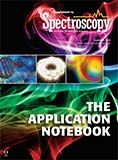Biomedical Fluorescence Applications
Application Notebook
Many biomedical research applications exploit the natural fluorescence response of amino acids, the essential building blocks of all proteins. These protein fluorescence responses have been used for everything from pharmaceutical manufacturing to biowarfare defense.
Intro to Proteins and Amino Acids
Proteins, the complex organic compounds made of chains of amino acids, are the most abundant organic molecule in all living things on Earth. They act as catalysts, regulate physiological processes, and they defend the body against disease.
Three common amino acids, tryptophan, tyrosine, and albumin, responsible for the majority of inherent fluorescence, have a common structure of hydrogen-based rings. These ring structures, called aromatic hydroxyl groups, absorb UV radiation and emit a weak fluorescent signal at varying wavelengths.
Fluorescence in Action: Cancer Fighting Weapons
Spectroscopy has proven to be invaluable in the fight against cancers. In lung cancer detection, for example, use of autofluorescence bronchoscopy employs a narrow probe inserted through the patient's mouth into the upper bronchial tree.
Autofluorescence has been shown to be far more sensitive than white light bronchoscopy in the detection of carcinomas or dysplastic lesions, but it also has a high rate of false positives. Researchers at the Department of Respiratory Diseases in Rotterdam, the Netherlands (1), are investigating the use of absorbance/reflection optical spectroscopy to improve specificity without losing sensitivity.
Using a specially designed probe to fit the 2.8 mm bronchoscope channel, the mucosa tissue was irradiated with a tungsten/halogen broadband light source and a blue laser calibrated to 407 nm. The resulting reflectance and fluorescence emissions were collected via a multichannel Avantes spectrometer installation equivalent to two AvaSpec-ULS2048CL-EVOs in parallel.
The emission peak for autofluorescence of healthy tissue was 500 nm. Areas that display an abnormal fluorescence profile can be rapidly targeted for additional spectral measurements which can be acquired in <1 s. Diseased tissue displayed drastically lower emission intensity at shorter wavelengths compared to healthy tissues. The combined autofluorescence imaging and optical reflectance spectroscopy significantly improved the positive predictive value compared with autofluorescence alone without sacrificing sensitivity.
Experimental Design
The Avantes Engineering team reproduced a series of experiments (2) conducted with samples of tryptophan, tyrosine, and bovine serum albumin to demonstrate our protein detection capabilities. The team used conventional absorbance techniques with a continuous wave (CW) illumination source (AvaLight-DHc) and an AvaSpec-ULS3648-USB2 spectrometer configured for UV (190–400 nm). Absorption measurements, recorded between 190–320 nm, correlated changes in concentration to changes in absorption. Fluorescence was not measured during this experiment.

Figure 1: Absorption response of amino acids in 0.25 mg concentration solution.
The team running this experiment prepared three different concentrations for each of the three sample analytes: 1 mg/mL, 0.5 mg/mL, and 0.25 mg/mL, and took broadband absorption spectra profiles for each.
Results
The absorption profiles of the amino acids correlated directly with the amino acid concentration in solution. As fluorescence is a function of absorbance and quantum yield, the fluorescence can be estimated and would be expected to also correlate with concentration.
References
(1) M.P.L. Bard et al., "Improving the specificity of fluorescence bronchoscopy for the analysis of neoplastic lesions of the bronchial tree by combination with optical spectroscopy," Lung Cancer 47(1), 41–47 (2005).
(2) P. Held, "Quantitation of peptides and amino acids with a Synergy(tm) HT using UV fluorescence." B.-T. Instruments, Winooski, VT (2003).

Avantes USA
500 S. Arthur Ave., Unit 500, Louisville, CO 80027
tel. +1 (303)-410-8668
Website: www.avantes.com
